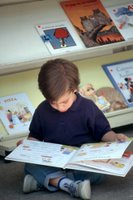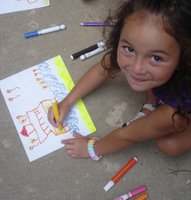There are so many wonderful packaged Unit Studies available to homeschoolers that you don't know where to start. Instead of buying something pre-packaged, how about starting with an idea and
let your children's interests decide where to go with it.
Have you thought about starting a unit study in the kitchen... with a recipe?
You can certainly pick your own recipe to start your unit study, but here is an example of how it can work. The recipe I have in mind is for
Beef Stroganoff. Your kids can decide which way they want to go with this, but here are some suggestions:
1. Investigate the different stories about the
origins of Beef Stroganoff and decide, based on the evidence, which version may be the correct one.
2. Research
the year the dish was invented and explore that time period. What important events were happening around the world then? Who was the US President and what was the US like at that time? What were the people in Russia wearing in the 19th century? What other foods were popular in Russia back then? What was the main mode of transportation during that time period? Get in as deep as you want on any of these.
3. What is a count? Draw and color a
nobility tree showing the rankings of nobility from most important to lowest ranking. Is it still that way in Russia today?
4. Explore Russia
geographically. Find it on the world map. Make your own map of Russia and include topographical items. Add bodies of water, mountains, cities, industry, and whatever else you want. Make charts of demographics. Create math story problems involving air or boat travel from Russia to the US, or from one city in Russia to another. Compare the size and circumference of Russia as compared to Europe and the US.
5. Learn about
Count Stroganov and his family history. Create a play about his life.
6. Make a
scrapbook by downloading pictures off the internet and then adding captions explaining the pictures.
7. Compare 5 different Beef Stroganoff recipes and notice which ingredients are the same and which are different. Make a
bar chart of the ingredients from all the recipes.
8. Create a Russian
newspaper with news items that might have happened in the 19th century. What kind of ads might they have had then?
9. Make beef stroganoff! You can
have a Russian night and make a whole meal of Russian food. Visit some online Russian museums to understand what their dishes and utensils might have looked like and how they would dress for a meal.
10.
Write a fictional story about a girl or boy in Russia.
These are ideas on how to go from just one recipe to a unit study. Other recipes work just as well. Take a look at your recipe for pizza and take a trip to Italy, or explore the Tollhouse chocolate chip cook recipe; there's a good story there. How can you go wrong with pizza or cookies?
The author of this article, Peggy Baron, is the editor of the popular Cookin' Kids Newsletter. Interesting themes, fun facts, silly clip art, easy recipes, kid jokes, cooking terms, and safety tips make this newsletter a hit with kids! Learn more about it at
Cookin' Kids.com

Labels: cooking, homeschool






